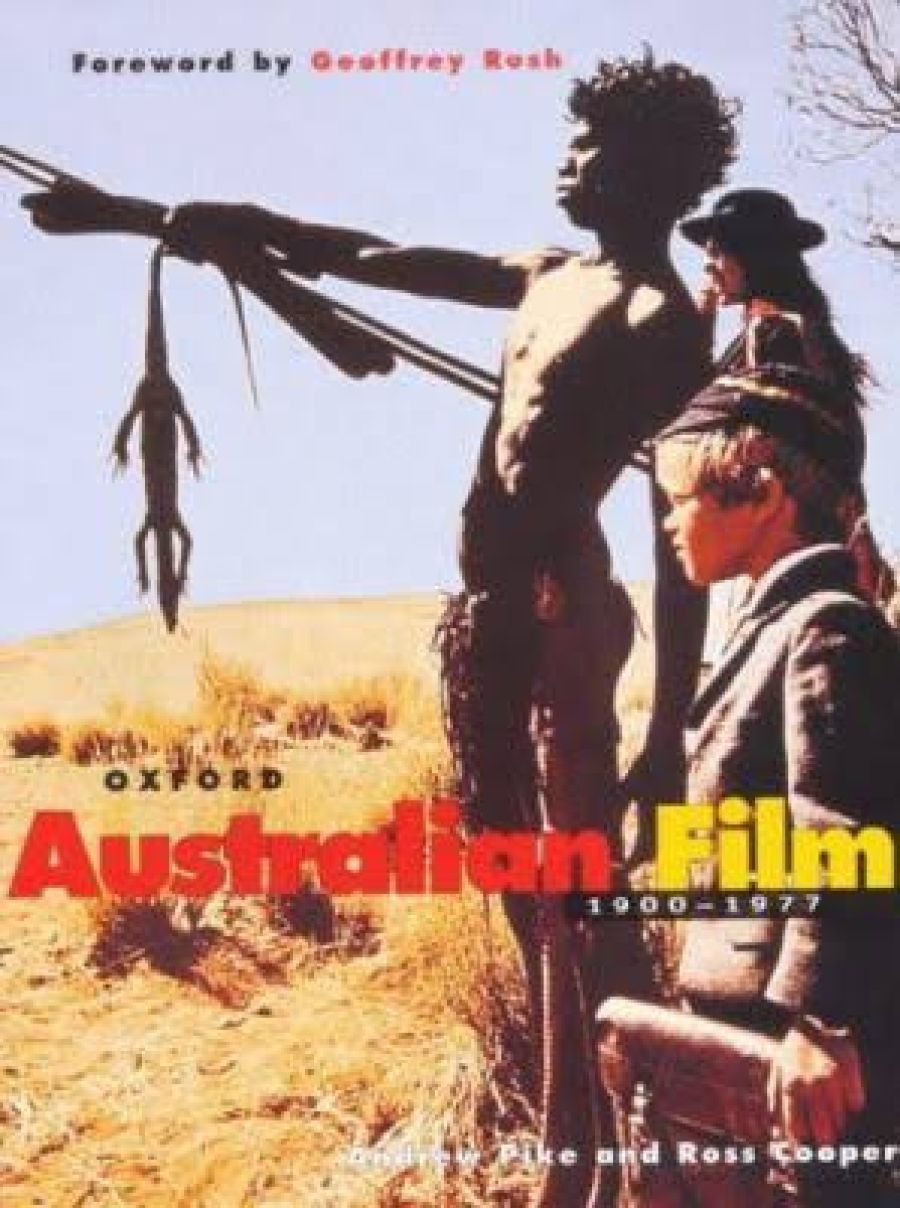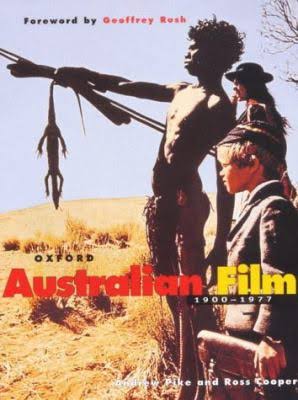
- Free Article: No
- Contents Category: Film
- Review Article: Yes
- Article Title: Opening Up Australian Film History
- Online Only: No
- Custom Highlight Text:
John Baxter’s Australian Cinema was the first of a number of works on the history of film production in Australia – all, in varying degrees, superficial, selective and inaccurate, in such a new field, where to arouse interest in the subject was perhaps as important as to supply information, these early books could be forgiven for such inadequacies. But Pike and Cooper have at last taken the next step. Using material gathered over a ten- year period from many sources (archives, contemporary journals, personal reminiscences, and the films themselves), they have compiled a comprehensive encyclopaedia-style coverage of the feature films produced in Australia from 1900 to 1977.
- Book 1 Title: Australian Films 1900-1977
- Book 1 Biblio: AFI / OUP, $75.00 hb, 448 pp
- Book 1 Cover Small (400 x 600):

- Book 1 Cover (800 x 1200):

For each film, listed in order of release date, we are given a list of full credits, a synopsis of the story, and some information about production history and the background and future career of the people involved. The definition of ‘feature film’ is elastic, particularly in relation to length, but the book is basically concerned with 'the narrative film intended for theatrical screening’. So entry No. 1 is Soldiers of the Cross (1900), with a reminder that this was not a continuous narrative, but rather ‘a complex display of inter-related films, slides, music and the spoken word’. The final entry is No. 488, Fantasm Comes Again (1977). This chronological organisation enables a reader to see clearly the changes in styles and the peaks and troughs of production over the period. A comprehensive index still allows easy reference to any specific title, and also lists those named in the credits, so that the career of any director or actress may also be followed.
The book is divided into sections, each covering roughly a decade: introductions to each of these provide a social and film industrial context to the rest of the text. Within the parameters they have established, the authors have tried to be completely comprehensive: other volumes are needed to cover the important areas of film-making, such as documentary and avant-garde films, which receive only passing mention.
They have also attempted maximum accuracy, for instance by asking the filmmakers themselves to check information wherever possible. There are sure to be errors and omissions still, in a work of such scope and detail, but it would be petty of a reviewer to seek these out, when the overriding impression is one of scrupulous scholarship. The authors themselves admit fallibility, and invite readers to contact them with further information, or to write further books and articles themselves. The book admirably fulfils the stated intention ‘to open up the field of Australian film history by establishing a factual framework on which others may build’.
But it is not merely a dry reference work to be consulted like a telephone book for specific answers to specific questions. The section introductions, taken together, provide a summary of the story of film production, distribution and exhibition in the Australian context. And the story the entries have to tell makes fascinating browsing or dipping, in spite of the objective, rather dry, writing style. The highlights of the story are now reasonably well-known, thanks to those pioneer historians: titles such as Soldiers of the Cross (1900), The Story of the Kelly Gang (1906), The Sentimental Bloke (1919), or more recent ones as Picnic at Hanging Rock (1975) or Storm Boy (1976); names such as Raymond Longford, Ken Hall, Charles Chauvel, Peter Weir, Tim Burstall. But as well as these, there are the lesser known, strange and intriguing aspects – the films that surfaced momentarily, appearing in advertisements for a few days without details of story or production, or the companies which produced only one film. Between the lines can be read the unfulfilled dreams and the disappointed ambitions of those who believed they were onto a ‘sure thing’ with ‘pictures’, and could not understand how they failed to make their fortunes as others had done.
The controversial questions of just why so many careers were so brief, and what role the government played or failed to play in the story, are raised. The effect of the Australasian Films monopoly, and of the influence of Hollywood distributors is mentioned. But polemics is not a major purpose of the book: that is left to more specialised works, such as, for instance, the Australian Screen Studies series soon to be published by the AFI.
For this book is part of an ongoing publication programme of the Australian Film Institute, which is at last embarking on this important aspect of its brief, ‘to promote and foster an Australian film culture’. Let us hope that their plans include regular up-dating and revision of the Pike and Cooper book, which would then remain a standard reference work for many years, perhaps indefinitely.
The book is a joy to handle – soft, high-quality paper; beautifully reproduced illustrations, most not used elsewhere and quite a few in colour; eye-catching layout of each page. It is large, but not inconveniently so – a little smaller than coffee-table format, and easily handled. The small print may worry some readers, but to encompass so much in a book without cluttering the pages was no small achievement.
But there are still two serious drawbacks. The first is, fortunately, remediable. In the interests of economy, the footnotes were omitted from the published volume, thus limiting its credibility, and reducing its value to a serious researcher. In March, however, a Reference Guide to Australian Film 1906- 1969, will be available free from the National Library. This publication has been prepared by Pike and Cooper as a bibliographical listing for each film: in fact, with the retail price of the main volume at $75.00, many potential purchasers will probably turn to this reference Guide as a substitute.
This price is the greatest drawback to the book. It will, unfortunately, limit its market, probably to libraries, and with library budgets as tight as they currently are, perhaps restricting use of the book to reference on site. This is particularly disappointing to students in the growing number of media courses studying the Australian film industry, who should have immediate and easy access to the information this book contains, and to the inspiration to further work that it is capable of giving. The value of the contents may be many times that of its competitors, but books are seldom purchased with this criterion in mind. Members of the AFI can purchase it at a discount, but even this price ($56.25) is beyond the reach of most readers, and certainly of students.
It is a book to be kept handy for constant reference, and also to be enjoyed for frequent browsing: it would be a pity if the cost kept it on warehouse shelves, unread!


Comments powered by CComment